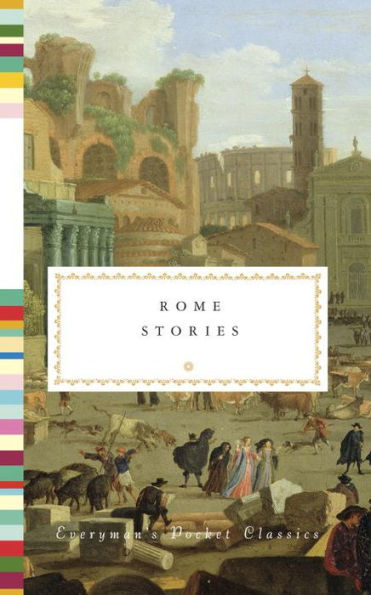

Hardcover
-
PICK UP IN STORECheck Availability at Nearby Stores
Available within 2 business hours
Related collections and offers
Overview
During its three-thousand-year history Rome has been an imperial metropolis, the capital of a nation, and the spiritual core of a world religion. For writers from antiquity to the present, however, it has long served as a realm of fantasy, aspiration, and desire. Captivating and lethal at one and the same moment, its beauty both transfigures and betrays those in thrall to it. Rome Stories explores the city's fateful impact through the writing of classical historians, Renaissance sculptors, Enlightenment poets and philosophers, American, British, and French novelists, and the writers of modern Italy.

Product Details
| ISBN-13: | 9781101907887 |
|---|---|
| Publisher: | Knopf Doubleday Publishing Group |
| Publication date: | 03/07/2017 |
| Series: | Everyman's Library Pocket Classics Series |
| Pages: | 416 |
| Product dimensions: | 4.70(w) x 7.20(h) x 1.20(d) |
About the Author
Read an Excerpt
PREFACE
During the eighteenth century's opening years a Tuscan poet named Vincenzo da Filicaja addressed a despairing sonnet to his native Italy. As the War of the Spanish Succession spread south of the Alps, with foreign armies besieging Turin and sacking Mantua, it looked to Filicaja as if the land had once again fallen victim to her ancient curse, that "fatal gift of beauty" she was doomed never to shake off. His prognosis was correct. With the war over, another alien invasion began, this time by Grand Tour travellers, packing up Italy's fatal beauty in the shape of art works to adorn their palaces and country houses.
The dream destination for addicts of this devastating allure was Rome, a city which, since its foundation in the eighth century BC, had existed symbolically as well as physically, a concept as much as a built environment, inexorable in its grip on collective fantasy. Whether as the metropolis of history's longest-lasting empire, as the nerve-centre of a great religion or, more recently, as the capital of a modern nation state, Rome has always nourished aspiration and desire among the world's writers. A narrative impulse flourishes among its bricks and stones like a weed or a spore, hardy and irrepressible. Stuff happens in Rome for the sake of the tales that can be told around it.
For Livy and other historians of Roman antiquity such potential was heaven-sent. Livy's account of the Tarquins, the rape of Lucretia and the making of the Roman republic is based on the facts as he knows them but for his readers it is the story, raw and robust, which triumphs over actuality. The same holds true of Plutarch's depiction of Julius Caesar's murder and Edward Gibbon's portrayal of hubris and nemesis in the life of Cola di Rienzi, so-called "last of the tribunes."
By Rienzi's medieval era, Rome had entered on its second incarnation, as city of the popes, reaching an apogee during the high Renaissance, when the sculptor Benvenuto Cellini tested his genius against the caprice and vindictiveness of the papal court. His chronicle of imprisonment in the Castel Sant'Angelo is one form of Roman survival narrative, yet so too, in a subtler sense, is Goethe's confrontation with Rome as described in his Italian Journey. Two hundred years have elapsed, the papacy is no longer a European power and the German poet is a casual tourist in a city whose past is more compelling than its present. As a danger zone where anything can happen, however, Rome appears second to none, its capacity for menace readily exploited by novelists like Nathaniel Hawthorne, George Eliot, and Henry James. Interestingly, only one of the featured authors here, Alberto Moravia, was a native Roman and his neo-realist urban snapshots create another planet from the domain of emperors and popes. Reconciling the different Roman worlds is left to Pier Paolo Pasolini, whose unique sense of the city's enduring, pitiless physicality reveals a fatal gift of beauty as potent as ever.
—Jonathan Keates
Table of Contents
PrefaceLIVY, "The Revolt Against the Tarquins"
PLUTARCH, "The Murder of Julius Caesar "
BENVENUTO CELLINI, "Imprisonment, Escape, Recapture"
EDWARD GIBBON, "The Story of Rienzi"
J. W. VON GOETHE, from Italian Journey
STENDHAL, "Vanina Vanini"
NATHANIEL HAWTHORNE, from The Marble Faun
GEORGE ELIOT, from Middlemarch
HENRY JAMES, "Daisy Miller"
EDITH WHARTON, "Roman Fever"
ALBERTO MORAVIA, from Roman Tales
PIER PAOLO PASOLINI, "A Night on the Tram"
